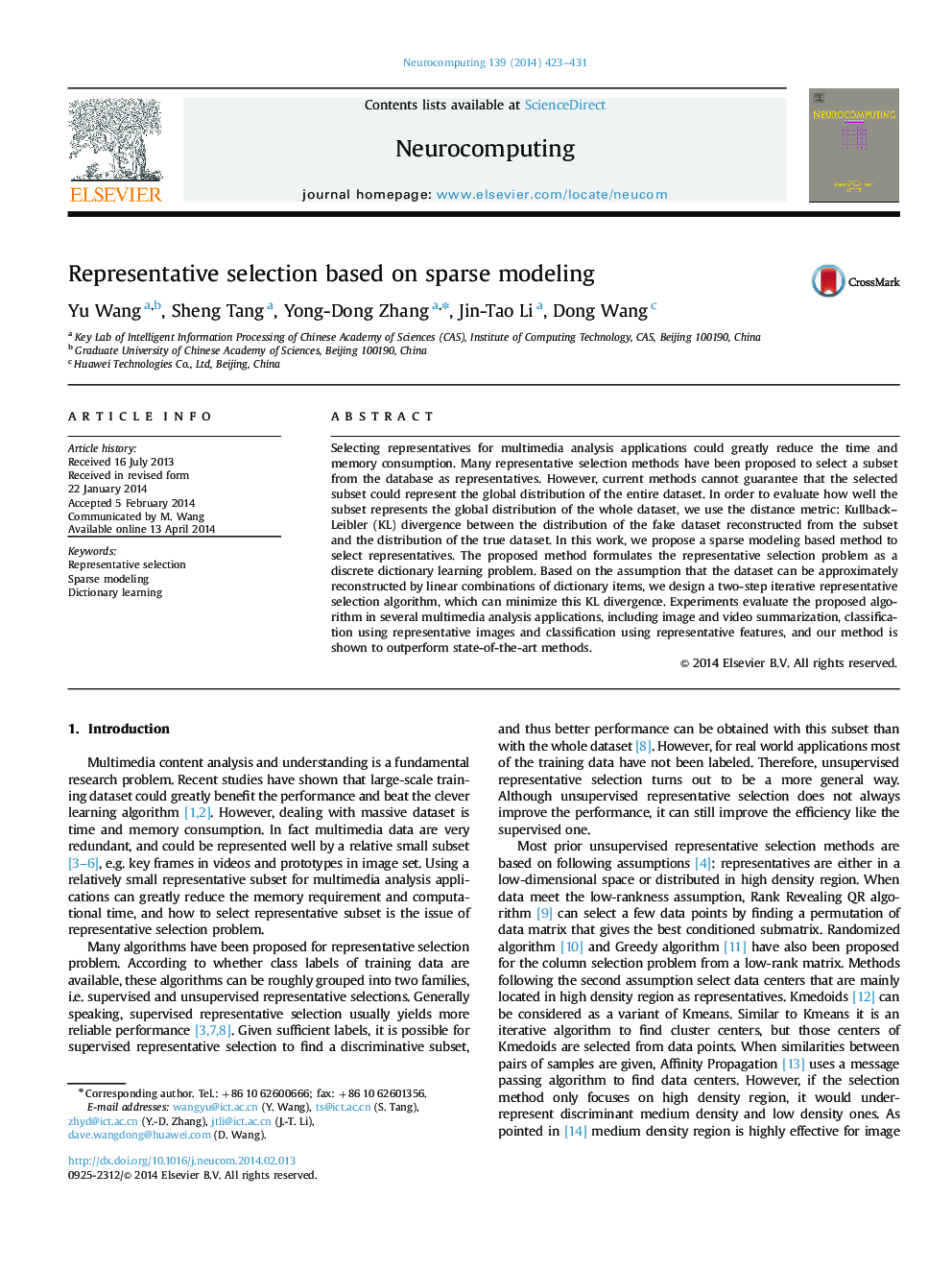| Article ID | Journal | Published Year | Pages | File Type |
|---|---|---|---|---|
| 407874 | Neurocomputing | 2014 | 9 Pages |
Selecting representatives for multimedia analysis applications could greatly reduce the time and memory consumption. Many representative selection methods have been proposed to select a subset from the database as representatives. However, current methods cannot guarantee that the selected subset could represent the global distribution of the entire dataset. In order to evaluate how well the subset represents the global distribution of the whole dataset, we use the distance metric: Kullback–Leibler (KL) divergence between the distribution of the fake dataset reconstructed from the subset and the distribution of the true dataset. In this work, we propose a sparse modeling based method to select representatives. The proposed method formulates the representative selection problem as a discrete dictionary learning problem. Based on the assumption that the dataset can be approximately reconstructed by linear combinations of dictionary items, we design a two-step iterative representative selection algorithm, which can minimize this KL divergence. Experiments evaluate the proposed algorithm in several multimedia analysis applications, including image and video summarization, classification using representative images and classification using representative features, and our method is shown to outperform state-of-the-art methods.
